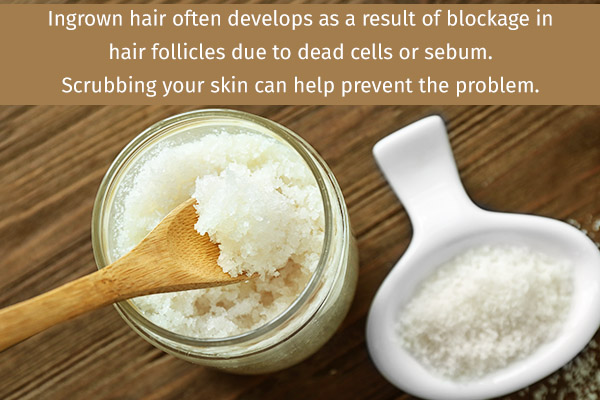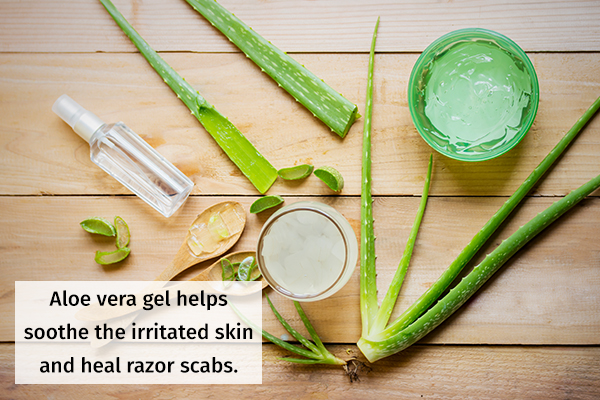Home Remedies for Ingrown Hair
Written by Jessica Lal on February 20, 2023
Ingrown hair is a frequent problem that often develops after shaving the hair, especially in the legs, arms, and underarms.
Ingrown hair develops due to hair growing from the hair follicle that curls and reenters the skin, further growing into the skin. This causes inflammation, pain, infection, and eruptions.
Ingrown hair is a common problem that can be easily avoided and treated with home remedies and self-care measures, which will be discussed in this article.
Home Remedies for Ingrown Hair
A mild problem of ingrown hair can generally be treated with the following at-home remedies.
Note: It is recommended to try the remedy which you find suitable and continue its use for a couple of weeks to test its effectiveness on your skin. If you do not notice any improvement, switch to another remedy. However, it is best to consult your doctor before trying these remedies, and seek medical care if the condition doesn’t improve or worsens.
1. Use a sugar scrub

Since ingrown hair often develops as a result of blockage in the hair follicles due to dead cells or sebum, scrubbing your skin can help prevent the problem.
Sugar scrubs help manage infected hair follicles and exfoliate the dead skin cells off the skin surface, enabling the ingrown hair to grow out of the skin normally.
How to use:
- Mix 1 cup of sugar with ½ cup extra virgin olive oil, and add in a few drops of tea tree oil.
- Apply the paste to the affected area using a cotton ball.
- Scrub gently in a circular motion for a few minutes.
- Wash with lukewarm water.
- Repeat twice a week.
You can also use almond, orange peel powder, oats, and rice flour scrubs.
2. Soak with tea tree oil
Tea tree oil possesses antiseptic, antibacterial, and anti-inflammatory properties that can be helpful in treating ingrown hair. The topical application of tea tree oil can help clear the debris in the pores, thus helping it open up, while reducing inflammation in the area.
How to use:
- Mix a few drops of tea tree oil with 4–6 ounces of warm water.
- Soak a clean dishcloth in it.
- Apply the cloth to the affected area as a warm compress.
3. Apply aloe vera

Aloe vera has antibacterial and skin-healing properties, which can be beneficial to the skin. Aloe vera gel helps soothe the irritated skin and heal razor scabs.
How to use:
- Apply fresh aloe vera gel to the affected area.
- Wash using cold water after about half an hour.
- Use this remedy two to three times a week for effective results.
4. Dab some apple cider vinegar
Apple cider vinegar (ACV) acts as an antibacterial agent and also helps remove the buildup of dead cells from the skin surface. This helps open up the pores, enabling the ingrown hair to grow in the correct direction.
- Mix 1 tbsp of ACV in 2 tbsp of water.
- Using a cotton ball, dab this solution on your skin and allow it to air-dry.
- Wash your skin after 15–20 minutes.
- Repeat this remedy up to three times a day.
Note: Make sure to dilute ACV before use. Conduct a patch test before using to check for any sensitivity.






